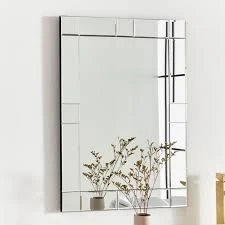

Understanding Low E3 Glass Innovation in Energy Efficiency
In an era marked by an increasing need for energy efficiency and sustainable building practices, Low E3 glass has emerged as a vital component in modern architecture and construction. This advanced glazing solution not only enhances the aesthetic appeal of buildings but also significantly contributes to energy conservation. Understanding what Low E3 glass is and its benefits can help homeowners, builders, and architects make informed decisions about materials that align with sustainability goals.
What is Low E3 Glass?
Low E3 glass refers to a type of low-emissivity glass that is coated with a microscopically thin layer of metal or metallic oxide. This coating is specifically designed to reflect infrared and ultraviolet light while allowing visible light to pass through. The 'E' in Low E stands for emissivity, which measures the ability of a surface to emit thermal radiation. A lower emissivity rating indicates that the material is better at retaining heat.
The designation E3 indicates a specific kind of low-E coating that offers optimum performance in terms of solar heat gain and thermal insulation. This makes Low E3 glass particularly effective in maintaining comfortable indoor temperatures and reducing reliance on artificial heating and cooling systems.
Benefits of Low E3 Glass
1. Energy Efficiency One of the primary advantages of Low E3 glass is its ability to improve energy efficiency. Traditional glazing allows a significant amount of heat to escape in the winter and enter in the summer. In contrast, Low E3 glass minimizes these losses, which can lead to lower energy bills—an attractive proposition for both residential and commercial property owners.
2. UV Protection The coating on Low E3 glass blocks harmful ultraviolet rays that can cause fading in furniture, carpets, and artwork. By reducing UV exposure, this type of glass contributes to the longevity of interior finishes and reduces the need for replacement.

3. Comfort By controlling the amount of solar heat gain and loss, Low E3 glass can enhance the comfort level of indoor environments. It helps maintain a more consistent indoor temperature, making spaces more enjoyable for occupants.
4. Condensation Resistance Low E3 glass has improved condensation resistance due to its low emissivity coating, which reduces the likelihood of moisture build-up on the glass surface. This is particularly beneficial in humid climates, where condensation can contribute to mold and mildew growth.
5. Noise Reduction While not its primary purpose, Low E3 glass can also contribute to sound reduction due to its thickness and the inert gas fill often used between the panes in double or triple-glazed units. This can lead to quieter indoor environments, which is a significant advantage in urban settings.
Applications of Low E3 Glass
The versatility of Low E3 glass allows for its application in a variety of settings. It is widely used in residential windows, commercial buildings, and curtain walls. In contemporary architecture, where large glass facades are popular, Low E3 glass offers the dual benefits of aesthetic appeal and energy efficiency.
Low E3 glass is also an excellent choice for green building projects, fulfilling criteria for energy performance ratings and sustainable certifications. Its ability to enhance energy efficiency aligns perfectly with modern building codes that increasingly promote environmentally friendly practices.
Conclusion
As the world gravitates towards greater energy efficiency and sustainability, Low E3 glass stands out as an innovative solution that addresses multiple concerns—energy conservation, UV protection, comfort, and noise reduction. Understanding the attributes of Low E3 glass can empower stakeholders in the construction and real estate industry to make better choices that benefit both the environment and their bottom lines. By incorporating Low E3 glass into building designs, we can contribute to a more sustainable future while enhancing the quality of our living and working spaces.